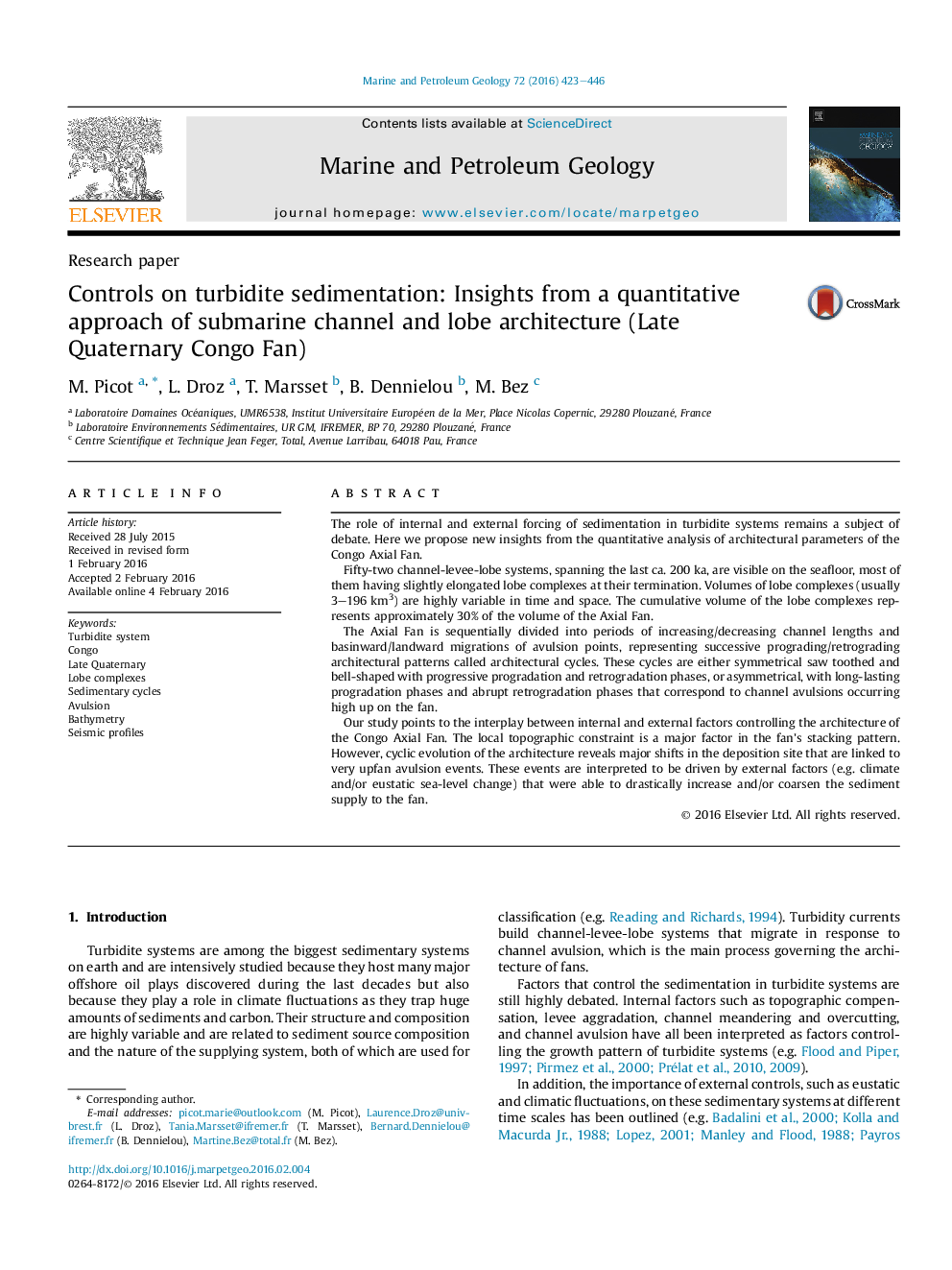| کد مقاله | کد نشریه | سال انتشار | مقاله انگلیسی | نسخه تمام متن |
|---|---|---|---|---|
| 6434519 | 1637155 | 2016 | 24 صفحه PDF | دانلود رایگان |
- Exhaustive architectural evolution of the Congo turbidite system since 200Â ka.
- Shifts of channel-levee-lobe systems reveal cyclic patterns at different time scales.
- Dimensions of terminal lobe complexes do not exhibit cyclic evolution.
- Pointing to permanent internal control by inherited topography.
- Revealing possible exceptional periods of increased or coarsening Congo River inputs.
The role of internal and external forcing of sedimentation in turbidite systems remains a subject of debate. Here we propose new insights from the quantitative analysis of architectural parameters of the Congo Axial Fan.Fifty-two channel-levee-lobe systems, spanning the last ca. 200 ka, are visible on the seafloor, most of them having slightly elongated lobe complexes at their termination. Volumes of lobe complexes (usually 3-196Â km3) are highly variable in time and space. The cumulative volume of the lobe complexes represents approximately 30% of the volume of the Axial Fan.The Axial Fan is sequentially divided into periods of increasing/decreasing channel lengths and basinward/landward migrations of avulsion points, representing successive prograding/retrograding architectural patterns called architectural cycles. These cycles are either symmetrical saw toothed and bell-shaped with progressive progradation and retrogradation phases, or asymmetrical, with long-lasting progradation phases and abrupt retrogradation phases that correspond to channel avulsions occurring high up on the fan.Our study points to the interplay between internal and external factors controlling the architecture of the Congo Axial Fan. The local topographic constraint is a major factor in the fan's stacking pattern. However, cyclic evolution of the architecture reveals major shifts in the deposition site that are linked to very upfan avulsion events. These events are interpreted to be driven by external factors (e.g. climate and/or eustatic sea-level change) that were able to drastically increase and/or coarsen the sediment supply to the fan.
Journal: Marine and Petroleum Geology - Volume 72, April 2016, Pages 423-446
